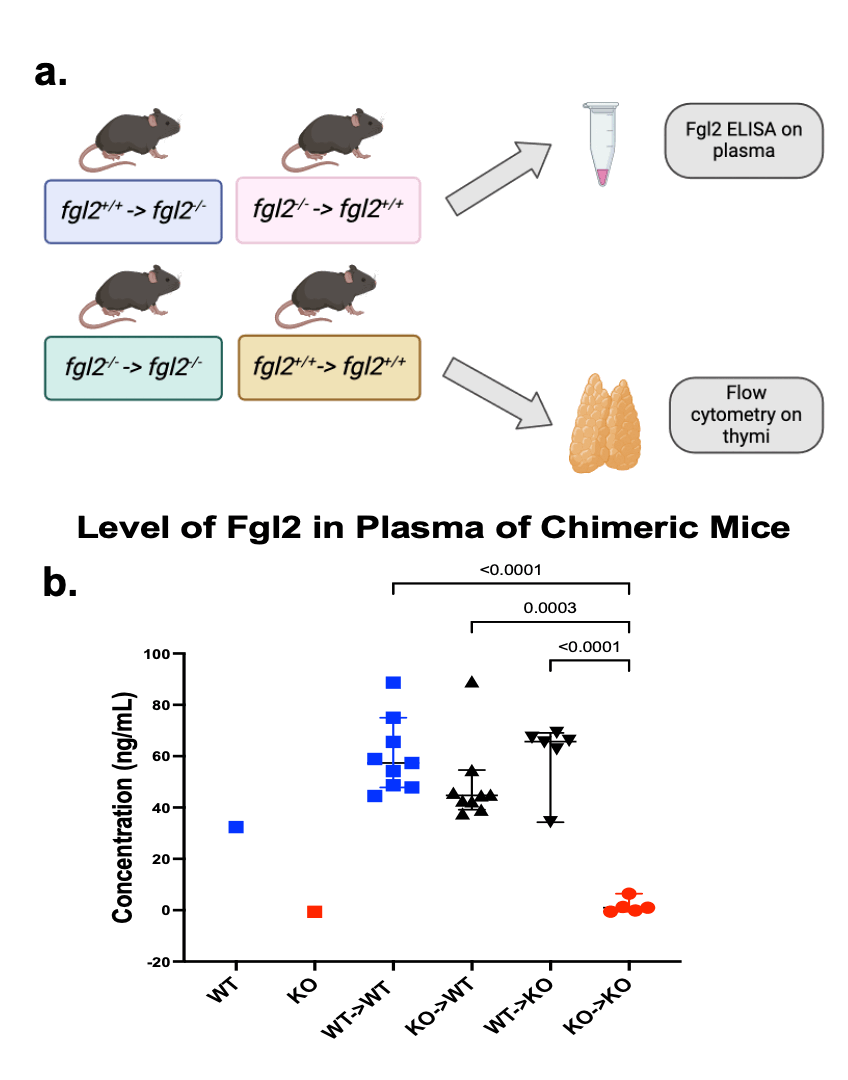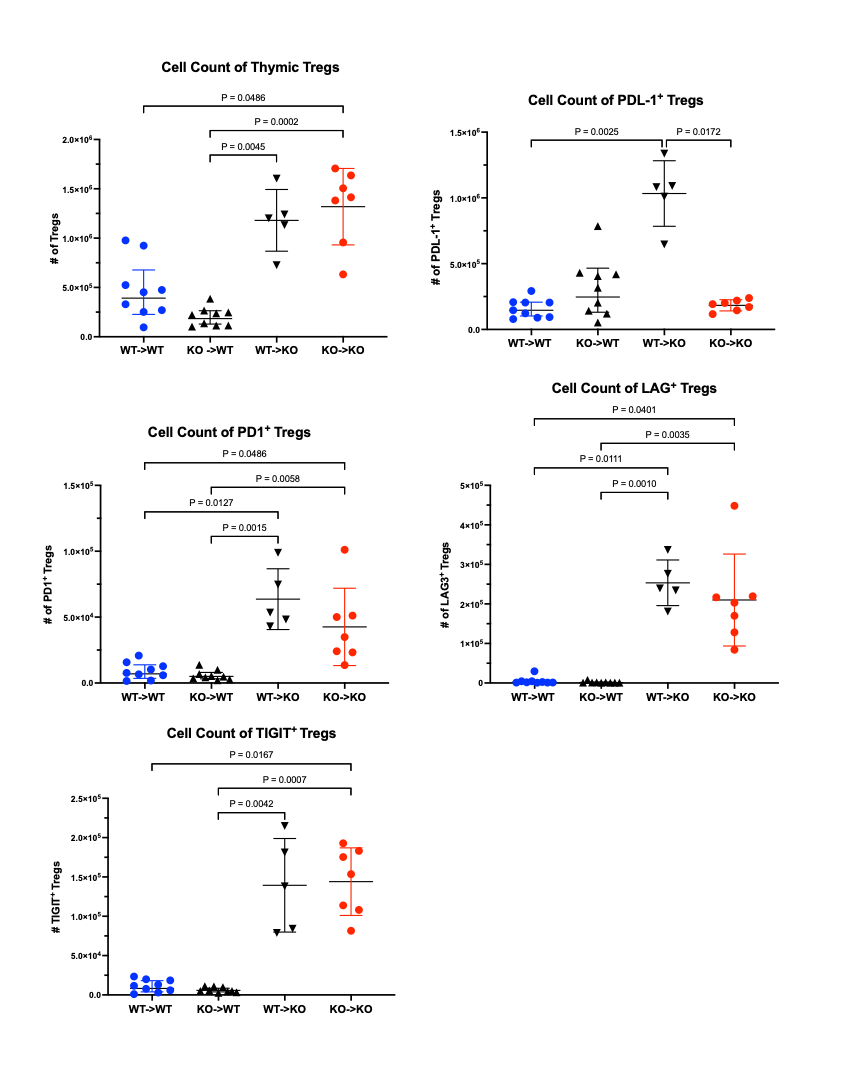The fibrinogen-like protein 2 molecule influences the development of thymic regulatory T Cells
Christina Lam1,2, Sajad Moshkelgosha1, Stephen Juvet1,2.
1Latner Thoracic Research Laboratories, University Health Network , Toronto , ON, Canada; 2Institute of Medical Science (IMS), University of Toronto, Faculty of Medicine, Toronto, ON, Canada
Latner Thoracic Research Laboratories.
Introduction: Transplantation is the primary treatment for patients with end-stage organ failure. However, long-term outcomes are limited by immunosuppressant toxicities and chronic graft rejection. Regulatory T cells (Tregs), with their immunoregulatory capability, hold great potential as a tolerance-inducing agent. As such, identifying factors involved in their development and commitment is required for realization of their therapeutic potential in solid organ transplantation. Fibrinogen-like protein 2 (Fgl2)- deficient Tregs are functionally defective, so we tested the hypothesis that Fgl2 is required for normal thymic Treg development.
Method: We first generated reciprocal Fgl2 bone marrow chimeras by reconstituting B6 CD45.1 or CD45.2 female mice with bone marrow stem cells from either fgl2+/+ (WT) or fgl2-/- (KO) mice, producing WT->KO and KO->WT chimeras, along with their corresponding KO-> KO and WT->WT controls. Reconstitution was monitored by monthly tail bleed. Once it reached 90% or more, we collected their plasma and thymi for Fgl2 ELISA and flow cytometry (Fig.1a).

Results: There was no significant difference in the plasma concentration of Fgl2 between WT->KO and KO->WT chimeras, suggesting that both radioresistant and radiosensitive cells can produce Fgl2 (Fig. 1b). Strikingly, the number of Tregs and the expression of Treg effector molecules (PD-L1, PD-1, LAG3, and TIGIT) differed dramatically between the 4 chimeric groups (Fig.2a). Complete absence of Fgl2 (KO->KO) increased thymic Treg cellularity and effector molecule expression but only Fgl2 from radioresistant cells (KO->WT), and not radiosensitive cells (WT->KO) was able to restore baseline levels (Fig.2a).

Conclusion: Our data demonstrate that not only can radioresistant sources of Fgl2 contribute to its level in the circulation, but they can also influence Treg development. It appears that radioresistant cell-derived Fgl2 can act as a brake on thymic Treg cellularity and their effector molecule expression while radiosensitive cell-derived Fgl2 does not.
The authors would like to thank the UHN Foundation for making this work possible, along with the staffs at UHN's Animal and Flow Cytometry facilities.
[1] Tolerance
[2] Regulatory T cells
[3] Chimeric mice model
[4] Thymus
